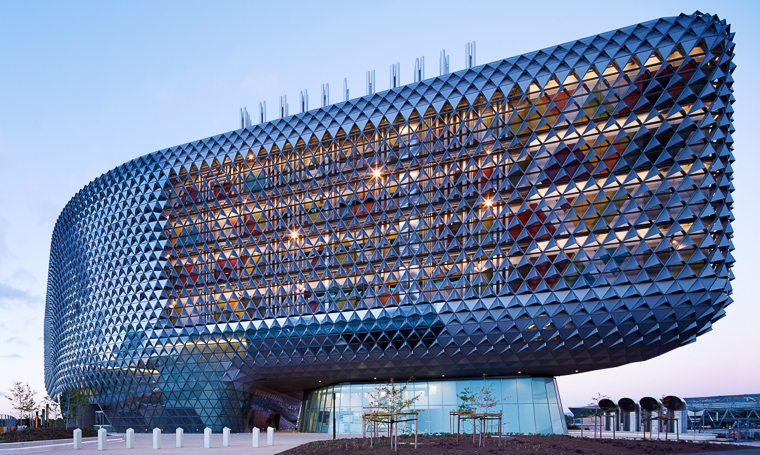
A targeted beam of high-energy particles known as protons can kill cancer cells without damaging surrounding healthy tissue. Yet no facility in the Southern Hemisphere can currently deliver this kind of therapy. Now significant national and international momentum is building to include a Proton Therapy Unit as part of the planned expansion of SAHMRI, South Australia’s Health and Medical Research Institute. Cancer specialist and former CEO of Cancer Council Australia Professor Ian Oliver said South Australia was the obvious choice to create a Proton Therapy Unit that would service Australia and the region.
“There have been groups in New South Wales and Victoria also considering a bid to establish a proton facility, but South Australia is the furthest ahead,” he said.
“Because SAHMRI already operates a cyclotron, it already has highly relevant experience in operating a particle accelerator as would be required for proton therapy.”
For proton therapy, purpose-built equipment known as a cyclotron accelerates the protons almost to the speed of light, and they are then directed through a probe to release their energy at the tumour site.
“The treatment itself takes less than two minutes,” said Prab Takhar, Director of the Molecular Imaging and Therapy Research Unit at SAHMRI.
“The protons do not interact with any other part of the body until the predetermined treatment point is reached, and the energy kills the cancer cells.”
Because it can be so precisely controlled, proton therapy is the best option for treating cancers when regular radiation is too risky due to small tumour size, or location adjacent to crucial organs like brain, spinal cord and heart. Childhood cancers are especially suited to proton therapy.
Director of Radiation Oncology at the Royal Adelaide Hospital Associate Professor Michael Penniment said that working closely with a software developer and clinicians across Australia and the United States had also played a key role in advancing South Australia’s case.
“Phillips makes a lot of the software used for proton therapy,” he said.
“By working with them, we were able to develop a method to perform objective comparisons between therapy with protons and other treatments.”
Nobody else had performed such comparative planning as it relates to proton therapy. The process also provided Professor Penniment with a crucial training opportunity.
“We now have staff that are already well versed in comparative planning for proton therapy, and the same process can easily be rolled out in other states,” he said.
With a Proton Therapy Unit established in South Australia, trained staff in hospitals across Australia and the Asia-Pacific could perform comparative planning with patients in their hometowns, and then send to Adelaide only those for whom the treatment would be suitable.
Early access to software from Phillips also allowed Professor Penniment to incorporate biological and mathematical modeling techniques to analyse the clinical impact of proton therapy on cancers and surrounding healthy tissues.
“We’re making sure the South Australian Proton Therapy Unit is centred on health economics and consumer-use data,” said Professor Penniment.
“Our work over many years has set us up in capability terms about 3 years ahead of any other Australian states.”
Professor Penniment’s team collaborates with medical institutions in the northern hemisphere that already operate proton cyclotrons and treatment centres.
“South Australia is well-placed to use its comparative advantage to locate the Proton Therapy Unit in Adelaide’s health and biomedical precinct,” said Professor Steve Wesselingh, Executive Director at SAHMRI.
“In the first instance, our focus will be on the treatment of cancer in children and then we will be able to move forward with developing protons for other types of cancer, such as prostate, brain and breast cancers.”
The centre will be able to treat between 600 and 800 patients every year.
SAHMRI, Flinders University and the Royal Adelaide Hospital have developed and contributed funding towards the AUD$280 million Proton Therapy Unit project. The South Australian government has recently requested support from its Federal counterpart to bring it to fruition.
SAHMRI’s commitment to developing a Proton Therapy Unit has received official support from the Cancer Council of Australia and advocacy body CanSpeak, as well as the Australian National University, the University of Wollongong, The Royal Melbourne Institute of Technology, the University of Melbourne, the University of Sydney and GE Healthcare.

